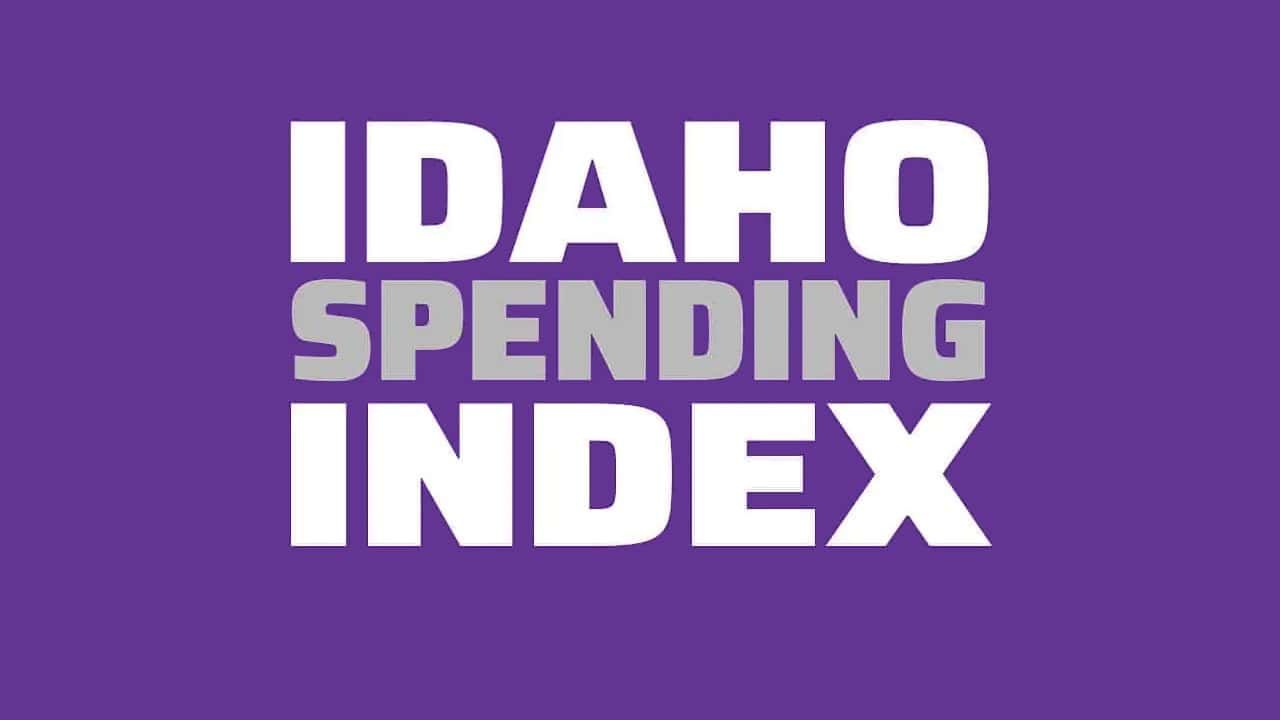


The Idaho Spending Index serves to provide a fiscally conservative perspective on state budgeting while providing an unbiased measurement of how Idaho lawmakers apply these values to their voting behavior on appropriations bills. Each bill is analyzed within the context of the metrics below. They receive one (+1) point for each metric that is satisfied by freedom-focused policymaking and lose one (-1) point for each instance in which the inverse is true. The sum of these points composes the score for the bill.
Analyst: Niklas Kleinworth
Rating: -4
Bill Description: House Bill 763 appropriates $1,745,832,600 to the Public Schools Division of Student Support for fiscal year 2025.
ANALYST NOTE: This is a new division created by combining the divisions of Administration, Children’s Programs, and Operations. This budget does not include the Idaho Digital Learning Academy, which was previously funded through Children’s Programs and is now a stand-alone appropriation.
Does this budget incur any wasteful spending among discretionary funds, including new line items? Conversely, does this budget contain any provisions that serve to reduce spending where possible (i.e. base reductions, debt reconciliation, etc.)?
House Bill 763 appropriates $99,957,700 in COVID-19 relief funding for the Elementary and Secondary School Emergency Relief Fund (ESSER III). These funds are intended to “keep schools open and combat the impacts of the COVID-19 pandemic.” Specifically, this program is dubbed “homeless funding,” allocating these funds to pay for temporary housing, eyeglasses, supplies, technology, and after-school programs. These funds were originally granted to the state by way of funding from the American Rescue Plan Act (ARPA). ARPA funds will expire in 2026.
This program far exceeds the proper role of public schools and extends into the realm of welfare. Though this line item is entitled “homelessness funding,” the allowable uses of these funds are far more diverse. This is a new entitlement program and an inappropriate use of these temporary funds. With the sunset date for these funds rapidly approaching, the agency will likely come back next year to request new, state-supported funding to care for these now-dependent families.
(-1)
Is the maintenance budget inappropriate for the needs of the state, the size of the agency, or the inflationary environment of the economy? Conversely, is the maintenance budget appropriate given the needs of the state and economic pressures?
This legislation confirms the program maintenance budget for the Division of Student Support of $1,635,647,200. Compared to the sum of the base appropriations from the 2022 fiscal year for Administration, Operations, and Children’s Programs (less IDLA), this division has seen a 42% increase in maintenance spending. This growth from the FY 2022 base is far higher than what would be prescribed by inflationary pressures and growth.
(-1)
Does this budget perpetuate or expand state dependence on federal dollars, thereby violating principles of federalism? Conversely, does this budget actively reduce the amount of federal dollars used to balance this budget?
This legislation appropriates $340,105,500 in federal funding to this division. This constitutes one out of every five dollars spent in the appropriation for the 2025 fiscal year. This budget also increases the level of federal spending by nearly $100 million — a 42% increase in funding coming from Washington, D.C., compared to last fiscal year.
These funds don’t come free either, especially as Idaho’s public education system becomes dependent on these dollars. In 2022, the Biden Administration threatened to revoke school lunch funding if districts did not comply with woke sports and bathroom policies for transgender students. This illustrates the danger and direct harm the acceptance of these funds poses to Idaho’s students.
(-1)
Does this budget contain hidden fund transfers or supplemental expenditures that work to enact new policy or are not valid emergency expenditures? Conversely, are fund transfers only made to stabilization funds or are supplemental requests only made in the interest of resolving valid fiscal emergencies?
This supplemental transfer moves a total of $105 million from the Public Schools, divisions of Administration, Operations, and Teachers. This is due to the post-pandemic return to counting students by average daily attendance (ADA) rather than enrollment. The department overshot their ADA projections for the 2023-2024 school year when crafting the budget for the 2024 fiscal year. This resulted in 1,000 fewer support units counted in the funding formula. This, in turn, resulted in a shortfall of spending authority.
These funds should revert back to the General Fund and, by extension, back to the taxpayer. Instead, this request moves these excess funds to the State Department of Education to be sent back to schools as discretionary funding. This is an inappropriate and wasteful use of taxpayer funds because they never belonged to the schools. They belong to the people. Thus, they have no authority to retain these funds to support students they are not teaching. These moneys should be removed from the budget in accordance with the funding formula and returned to the people of Idaho.
This request is an inappropriate use of a supplemental appropriation.
(-1)

